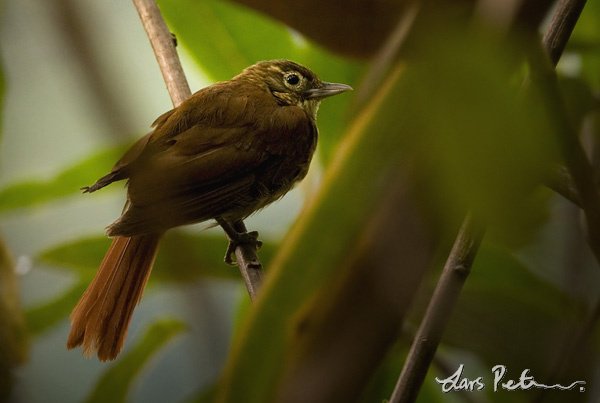
A friend of mine, who is preparing for a birding trip to the Amazon Rainforest, called me to tell me he is about to give up on the Ovenbirds; particularly the foliage gleaners. Almost shouting, he exclaimed: “Talk about brown jobs. They actually come in 50 shades of brown – get it? – and their names don’t help! What separates a Rufous-tailed Foliage-gleaner from a Rufous-rumped? A Cinnammon-rumped between a Brown-rumped? An Olive-Backed, a Buff-throated, a Chestnut-crowned, a Chestnut-winged, a Buff-fronted, a Dusky-cheeked, or a Ruddy Foliage-gleaner? They can occur side by side and look alike!!”
We tried to tackle the situation, acknowledging that identification is the central challenge of birding; most of the fun comes from being able to identify what we see. Despite the fact that the preparation and sense of anticipation is supposed to be part of the fun, he was not enjoying himself whatsoever; trying to figure out the Foliage-gleaners was tougher than he’d imagined.
Bird identification is not simply a matter of learning field marks. Often we can memorize all the field marks for a species, and still have trouble identifying it, while in other cases we may recognize a bird without seeing any traditional field marks at all. Common sense suggests that the birders who want to avoid misidentifications should study up mostly on the distribution of the bird, plumage, molts, male-female variation, and subspecies; however, most mistakes involve differences in perception. Every birder has his or her own way to learn and remember what is seen; usually by interpreting colors, or having mental tricks to help us remember things. This results in a personal pattern of recognition, whose own methods and clues can lead to the identification or misidentification of a bird.
The late Ted Parker was the first to make the connection that the voice of the bird, microhabitat, and behavior are the keys to identifying Neotropical forests birds. During his studies, Ted recognized the ovenbirds as one of the most challenging group of rainforest birds. He wrote what I believe was the first article of advanced bird identification on Neotropical birds; a seminal paper on foliage-gleaner identification, that appeared in the April 1979 issue of Continental Birdlife.
When it comes to Foliage gleaner identification, simply learning about field marks and distribution and microhabitats is often not enough. Foliage gleaner types all look rather similar in appearance, are rather secretive, move fast, and inhibit the darkened forest interior. It is not rare to read reports where Foliage-gleaners are just mentioned as Foliage-gleaner sp.? Along with Foliage gleaners and other groups of forest birds, Ted was also the first to recognize the value of learning bird vocalization as one of the most easy and reliable way to positively identify forest birds, and as a tool for reliably and effectively surveying interior forest birds.
Foliage-gleaners epitomize the challenges and rewards of Neotropical Forest birding. Knowing what Ted Parker went through to figure out the Foliage-gleaners was a motivation for my good friend to purchase the series on vocalizations of lowland rainforest birds, put out by Thomas Schulenberg and the Cornell Lab of Ornithology. I am expecting another rant from him when he gets to the Antbirds and Flycatcher.
Paintings in Feature Image by:
Birds of Peru: Thomas S. Schulenberg, Douglas F. Stotz, Daniel F. Lane, John P. O’Neill, Theodore A. Parker III












“the series on vocalizations of lowland rainforest birds, put out by Thomas Schulenberg and the Cornell Lab of Ornithology”–looking for it…are you referring to “Voices of Amazonian Birds”, Vols. 1, 2, and 3? I hope to have the challenge of the ovenbirds some day–got a small introduction in Panama.
Cool post, yes quite the challenge especially when they always seem to have their heads stuck in some bromeliad. Cool birds, yeah, always worth it to know the vocs! Love that plate and image too!
Mary Ann, correct that’s the series I am referring too. It is worth getting it!
Ovenbirds and Flycatchers are certainly a beautiful birding challenge in the Neotropics.
Thanks Pat, I am sure you gt a taste of these birds during your time at Posada and TRC. My first experience with them was at Explorer’s Inn. Loved it.